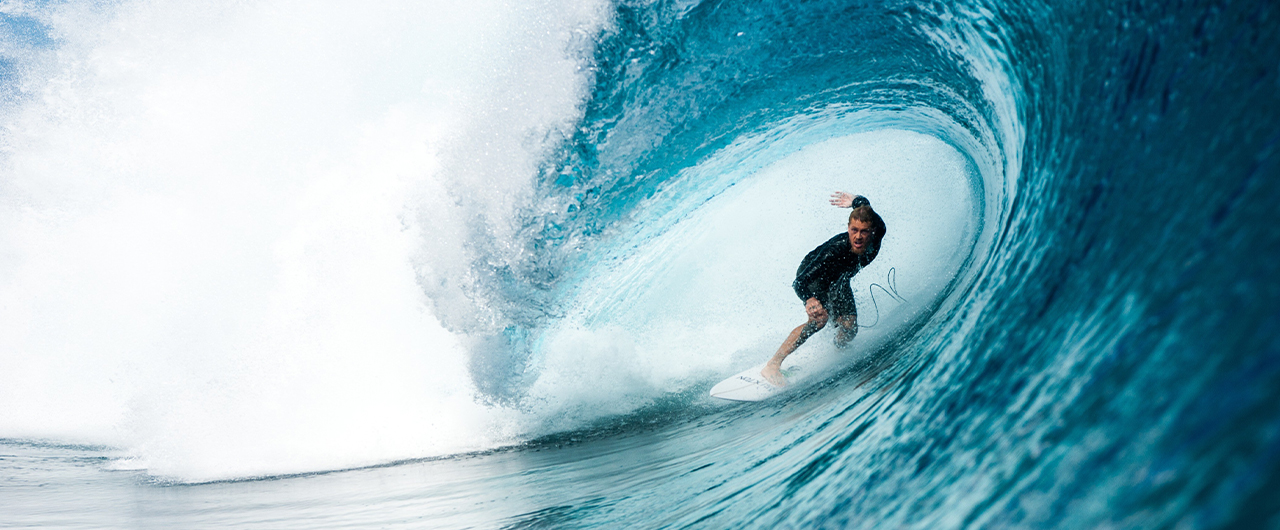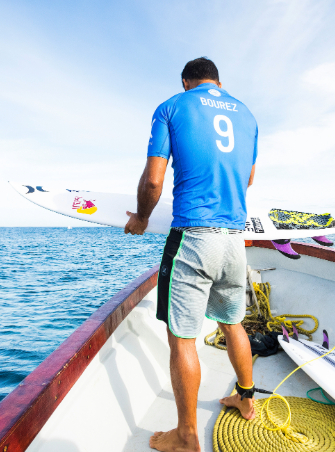The Wave
Cloudbreak is a long, peeling left-hand reef break that holds its own in swells from 1-2ft through to 10 ft+. Likewise, it tolerates the prevailing south-easterly winds, offering clean walls up to 15knts. From 20knts or more, you'll often find kitesurfers, windsurfers and even wing foilers in the lineup.
Optimal Conditions
The optimal swell is a long period south /southwest swell of around 17 seconds or more. Expect a thicker, heavier tube with a more westerly swell and peeling point breaks with more southerly swells.
Cloudbreak works across all tides but is best from low to mid-tide when currents are at their lowest (and crowds at their highest). With Fiji's increasing popularity as a surf destination, be prepared for busy breaks, especially from April to October.
Location
Cloudbreak is nestled in the turquoise waters of the Mamanuca islands, just off the western coast of Nadi. Expect a 5-10-minute boat ride from the closest islands (Namotu and Tavarua) and 20-30 minutes or more from other Mamanuca islands and the mainland.
Getting There
It's not possible to paddle out to Cloudbreak, no matter where you're staying so make sure you arrange a surf boat. Resorts such as Namotu and Tavarua include surf boats and highly experienced surf guides as part of their packages. Guests staying at other resorts must plan and ensure they book a reputable charter company to guide them.
Where to Stay
Tavarua Island and Namotu Island are the closest and offer the most renowned surfing experience. But there are other resorts on Malolo, Malolo-lailai and in/near Nadi that can arrange boat transfers and cater to all budgets and last-minute stays. If you plan on travelling from Nadi, get in touch with local surf charter companies like Fiji Surf Co, Kaiwai Watersports, Brothers Surf Tours and Dream Surf Fiji.
What to Ride
Cloudbreak is known for its powerful and consistent waves, making it a dream destination for experienced surfers seeking a challenge. While often surfable on a shortboard, having a step up with you is a good idea. Most surfers ride pintails in the 6'0" to 7'6" range. Due to the waves size, speed, and power, you must have a board you can paddle efficiently to get in early. Cloudbreak is notorious for breaking boards, so bringing a spare is always a good idea. And remember, Fiji does not have many surf shops where you can buy replacement boards, fins, or legropes, so be sure to pack everything you need.
Crowd Factor & Etiquette
Given its reputation and the allure of its waves, Cloudbreak can get crowded, especially during peak surf seasons. The lineup can become competitive, with local surfers and seasoned visitors vying for the best positions to catch the waves. Patience and respect in the lineup is crucial, so wait your turn, avoid dropping in on others, and maintain a friendly demeanour to ensure a positive surfing experience for everyone. If you're uncomfortable or feel the day's conditions are out of your league, don't paddle out.
Best Time of Year to Surf Cloudbreak
The best time to surf Cloudbreak is during the Fijian winter, which falls between April and October. This period experiences consistent southwest swells that travel uninterrupted from the south of Australia and generate the massive waves that Cloudbreak is famous for. Waves are usually smaller during summer, but this is also the cyclone season, so occasionally, there are larger swells. Cloudbreak has become a bucket-list destination for surfers worldwide. No matter where you're surfing, knowing your limits and showing patience, respect and etiquette is the best way to stay safe and keep everyone stoked. 
